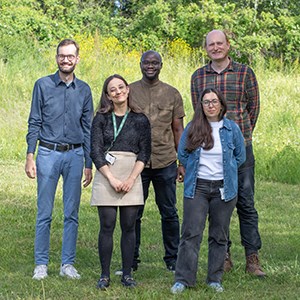Contact
Department of Crop Production Ecology, Dept. of Crop Production Ecology, Weed biology and management

A team of early-career researchers from SLU’s Department of Crop Production Ecology has secured funding from Ekhagastiftelsen to explore the ecological and nutritional benefits of increasing genetic diversity within cropping systems.
In a two-year field experiment across two sites in Sweden, researchers in a project called DIVERSOW aim to judge the ecological and agronomic benefits of modern varieties, and traditional wheat landraces as sole crops, in mixtures, and intercropped with field beans from a holistic perspective.
In each plot, they will measure weed and pest suppression, fungal disease resistance, and benefits to natural enemies of the pests, as well as crop nutrition, physiology and yield. The vision is that increased genetic diversity will create a cropping system more resilient to the diverse challenges of low-input agriculture, allowing the crops present to thrive more effectively than in a single, uniform, elite crop, as is typical in modern agriculture.
Preceding work has found that some traditional Swedish wheats can provide nutritional benefits, particularly in terms of micronutrients, while also growing well and adapting to stressful conditions like increased drought.
"These qualities are held in high regard by a community of farmers throughout Sweden who speak passionately about their advantages over modern varieties, which have long been subject to selective breeding focused on high yield in optimal conditions", says Darwin Hickman, one of the five researchers engaged in the project.
The group believes that it will be a worthwhile learning experience.
“I think we’re an unusual project group because we’re all early-career researchers, but we’ve come together over this because we all have expertise in certain aspects”, says Darwin Hickman.
“It is encouraging that there are funding sources available for work like this. It has given us a really valuable opportunity to learn on the job, work collaboratively, and support each other in running a project.”
James Ajal, also a member of the project group, agrees.
“One of the strengths of DIVERSOW is that the five of us can tackle different aspects of our study system together, by looking at both above- and below-ground factors in our field experiments”, he says.